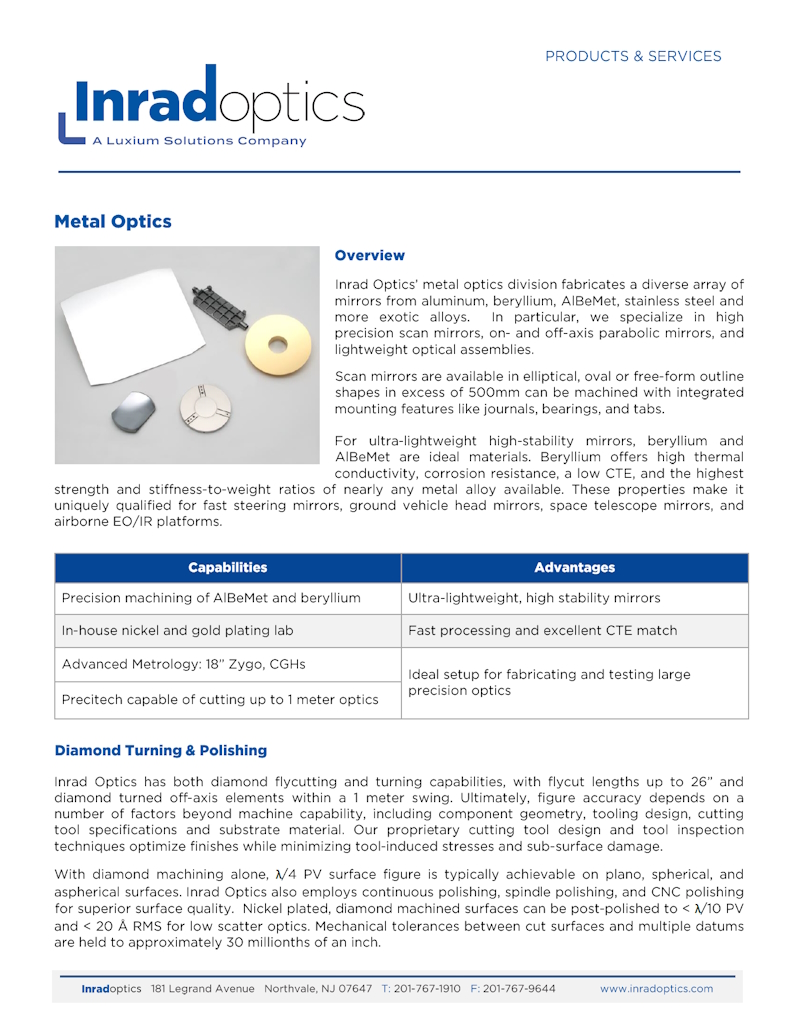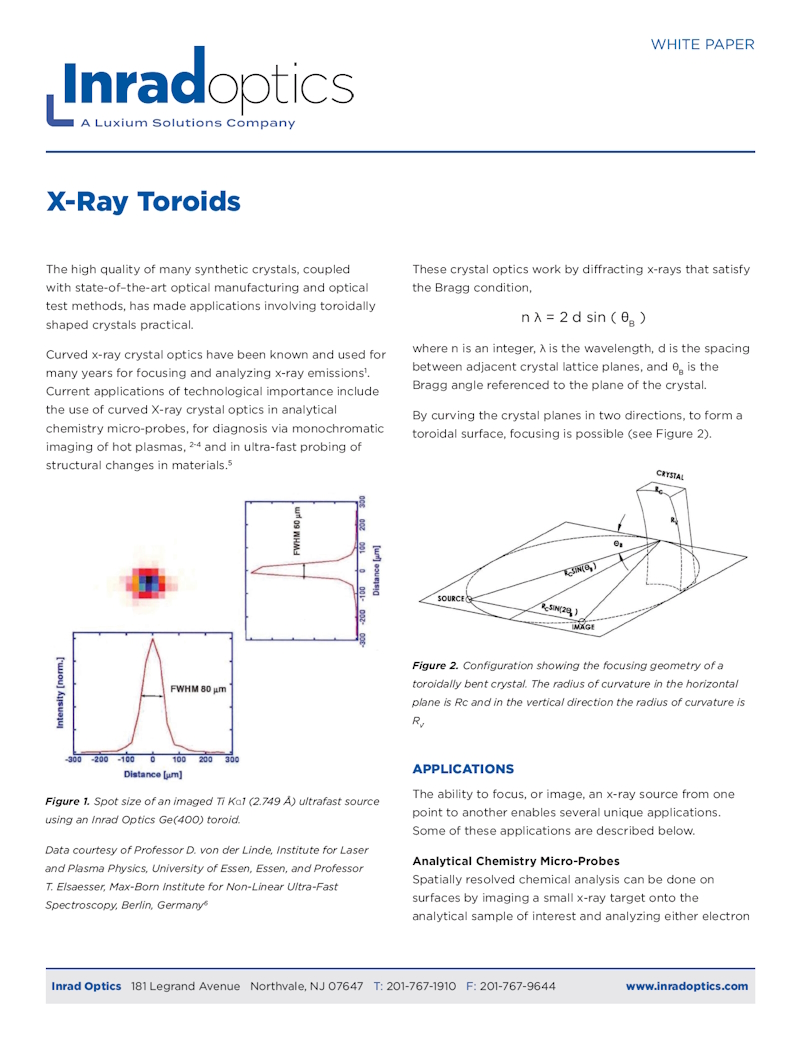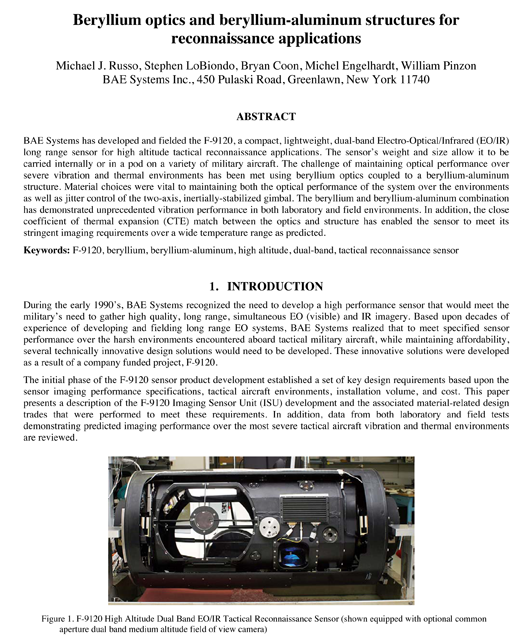White Papers
Metal Optics
Inrad Optics' metal optics division fabricates a diverse array of mirrors from aluminum, beryllium, AlBeMet, stainless steel and more exotic alloys. In particular, we specialize in high precision scan mirrors, on- and off-axis parabolic mirrors, and lightweight optical assemblies.
X-Ray Toroids
Using toroidally shaped crystals is more practical now than ever, thanks to the high quality of synthetic crystals and state-of-the-art optical manufacturing and testing methods. For years, curved x-ray crystal optics have been used to analyze x-ray emissions in applications like analytical chemistry micro-probes and plasma diagnostics.
Beryllium optics and beryllium-aluminum structures for reconnaissance applications
BAE Systems Inc., 450 Pulaski Road, Greenlawn, New York 11740
BAE Systems has developed and fielded the F-9120, a compact, lightweight, dual-band Electro-Optical/Infrared (EO/IR) long range sensor for high altitude tactical reconnaissance applications. The sensor’s weight and size allow it to be carried internally or in a pod on a variety of military aircraft. The challenge of maintaining optical performance over severe vibration and thermal environments has been met using beryllium optics coupled to a beryllium-aluminum structure. Material choices were vital to maintaining both the optical performance of the system over the environments as well as jitter control of the two-axis, inertially-stabilized gimbal. The beryllium and beryllium-aluminum combination has demonstrated unprecedented vibration performance in both laboratory and field environments. In addition, the close coefficient of thermal expansion (CTE) match between the optics and structure has enabled the sensor to meet its stringent imaging requirements over a wide temperature range as predicted.



